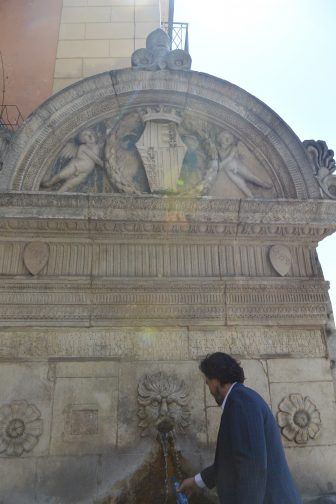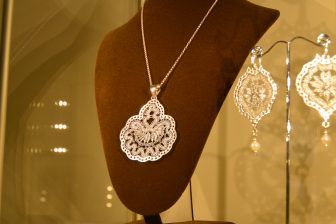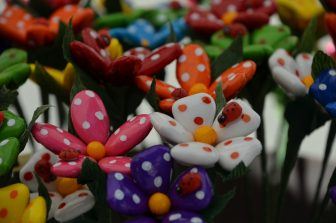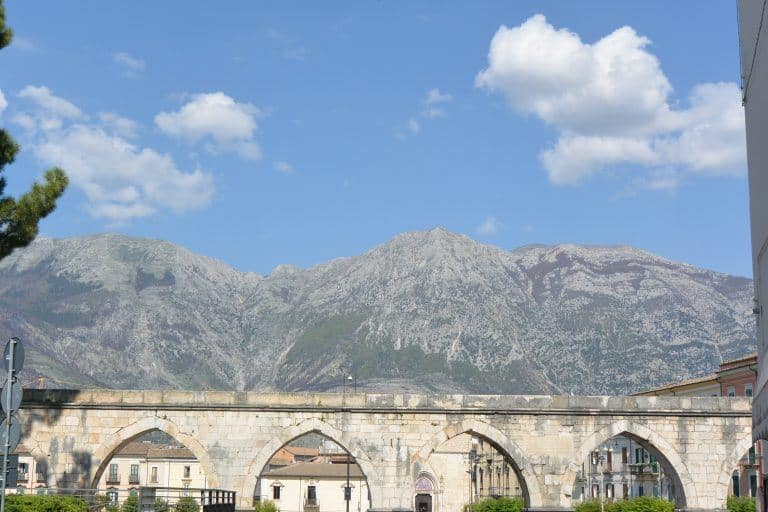
[ Apr.2018 ] I continue talking about our visit to Sulmona in Abruzzo in the middle of Italy.
We walked up the main street, called Corso Ovidio, from the southern end and found a huge square, Piazza Garibaldi, on the right hand side.
It has 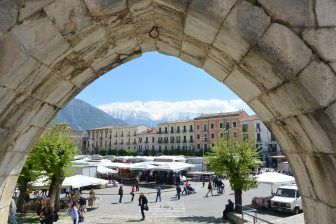 been a market place for a long time and, in fact, they were holding a market on the day that we were there, too.
been a market place for a long time and, in fact, they were holding a market on the day that we were there, too.
However, there was something blocking our view of the square.
It was the Medieval Aqueduct, which is the landmark of this town.
It was built in 1256 and the fresh water has been brought down from the surrounding mountains since then.
It still works, apparently, and you can drink the water from a fountain at the end of the aqueduct on one side of Piazza Garibaldi.
I was not brave enough to try the water but, in fact, when I passed the fountain and looked back there, I saw a man taking some water into his plastic bottle.
It is interesting to think that a man in the 21st century is doing exactly the same thing as a man in the 13th century would, and at the same place.
In this town, there is a unique procession for Easter.
There is a church, called San Filippo Neri, at one corner of Piazza Garibaldi.
On Easter Sunday, they move the statue of the Virgin Mary from the church of Santa Maria della Tomba, where we visited, to San Filippo Neri.
At the start of this procession, Mary is wearing a black dress to represent the fact that she would be mourning her son’s death.
While she is in the church of San Filippo Neri, Mary hears the news that her son has been resurrected.
She only half believes the news but comes out of the church to see.
First, she moves forward slowly, but when she sees her son at the canopy which is built at the centre of the Medieval Aqueduct, the clothes on the statue suddenly change colour to green, the colour of hope, and she runs towards him.
In other words, the people carrying the statue of the Virgin Mary run at full speed.
That is a very humane story, isn’t it?
The trick of Mary’s clothes changing colour from black to green is apparently secret and only the brotherhood that organise this procession know how it is done.
When all of the proceedings go well, the year ahead will be favourable, but if something goes wrong, people believe that something bad, such as a natural disaster, will happen.
If the statue of the Virgin Mary falls down and get broken, people become especially worried.
Apparently, in both 1914 and 1940, the statue fell and the world war started in each occasion.

